There are 26 centuries of history in Marseille, which is the oldest city in France! For starters, here are 10 places where you can find a little of the past. They range from the plaque commemorating the founding of Marseille in about 600 BC to the site where you can still see bullet holes from the fight to liberate the city from German occupation in 1944. They’re listed in chronological order, with a few of their stories attached. This is just an overview: some of the ‘big-hitters’ such as Notre Dame de la Garde and the Château d’If, will get fuller treatment in later episodes.
the earliest history in marseille

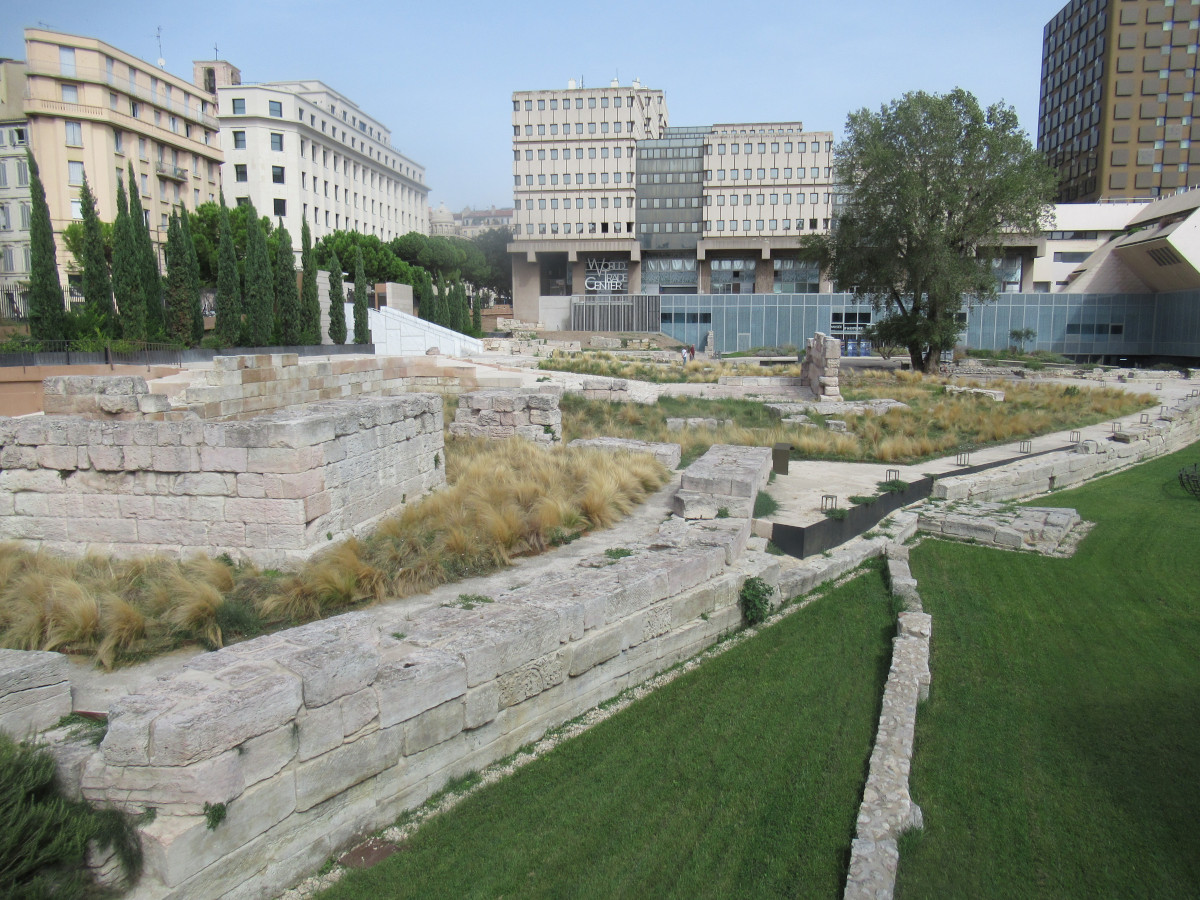
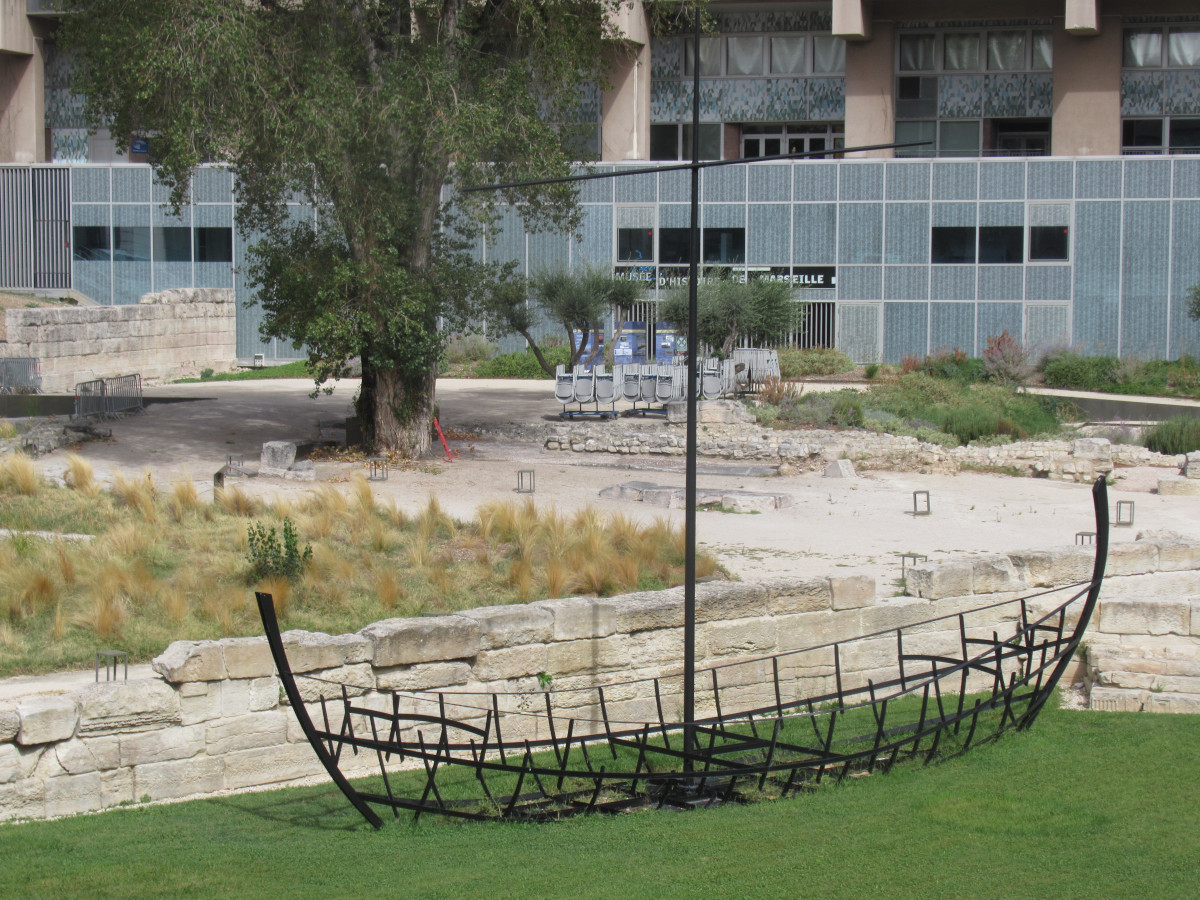
01 The plaque in the harbour
History in Marseille goes back more than 2 millennia. Set into the pavement in the harbour, just near the fish market, is a bronze plaque which reads ‘Around 600 BC, Greek sailors landed here from Phocaea, in Asia Minor. They founded Marseille, and civilisation shone out into the west from here.’
Legend has it that the Phocaeans liked the natural, sheltered harbour and the surrounding countryside and decided to stay. Protis, a daring young hero, went into the mountains to speak with Nann, the local king. That day, Nann was organising a feast at which his daughter, the beautiful Gyptis, would choose the man she wanted to marry, signalling her wish by offering him a cup of water. To the dismay of the locals, she chose Protis. Negotiations ensued and a deal was made. The Phocaeans would be allowed to settle and trade here in return for helping the locals export their animal skins, dried fish and pottery. Win-win. So the city was founded.
The Greeks settled first on the hill where the Fort Saint-Jean is and gradually spread out over what is today the Le Panier district. They called the city Massalia and built three temples, to Apollo, Artemis and Athena. They set up an ‘agora’, or market place, a university and a school of rhetoric where the sons (yes, just sons) of wealthy families could be educated in oratory and philosophy. They had a constitution based on Aristotle and an elected assembly to rule the city. One guidebook describes this as a ‘citadel of Greek culture in a wild land.’
02 The Museum of the Roman Docks
Julius Caesar annexed the city in 49 BC after 6 months of conflict. He decided not to destroy it, but allowed it to become a ‘federal state’, although he took the precaution of confiscating its wealth, arms and ships. The Roman city, known as Massilia, was prosperous, an important maritime hub and an early centre of Christianity. As the Roman Empire declined, so did Massilia and it was eventually captured by the Visigoths in the 5th century.
At the Museum of the Roman Docks you can see many remains of Roman history in Marseille, including exhibits on shipping, the docks and every day life. Many were discovered after the area was bombed during World War II.
from the middle ages to the 17th century
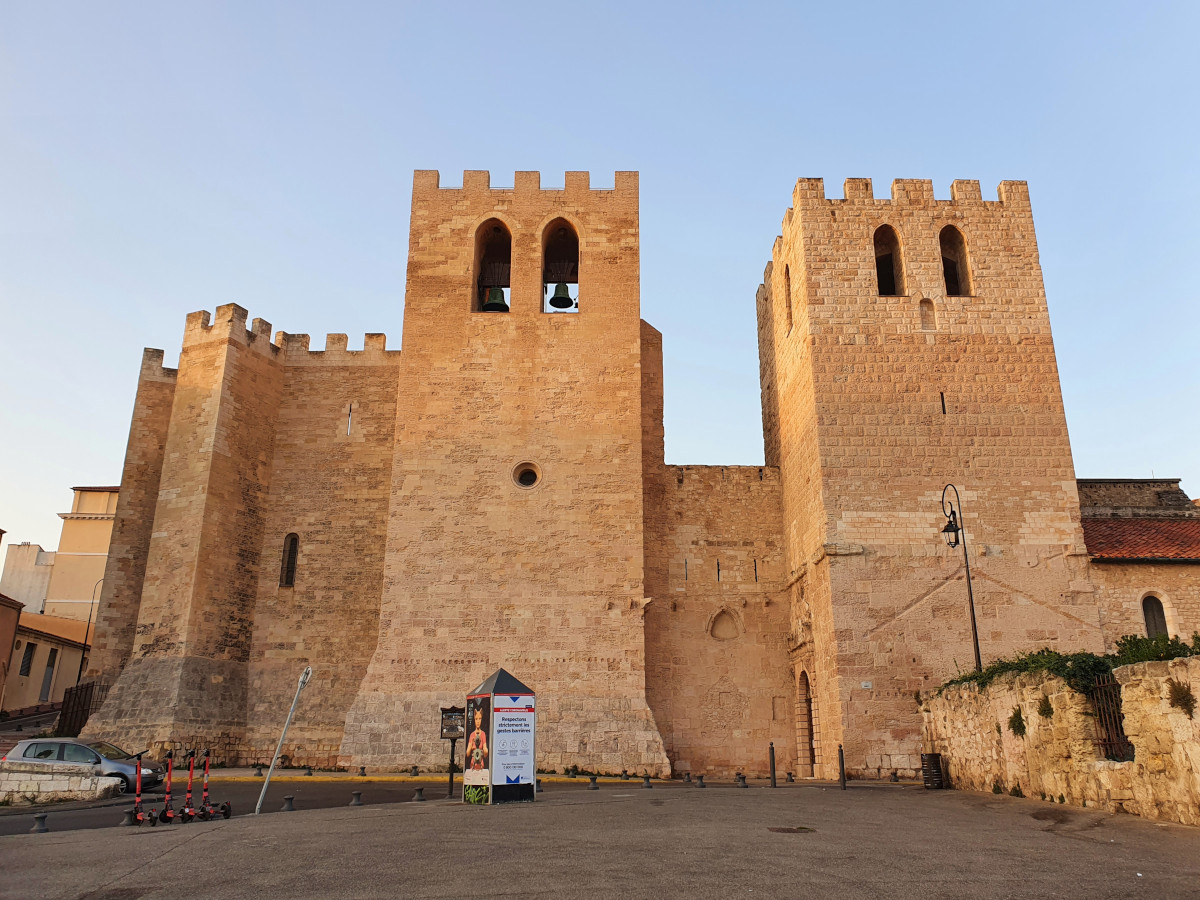
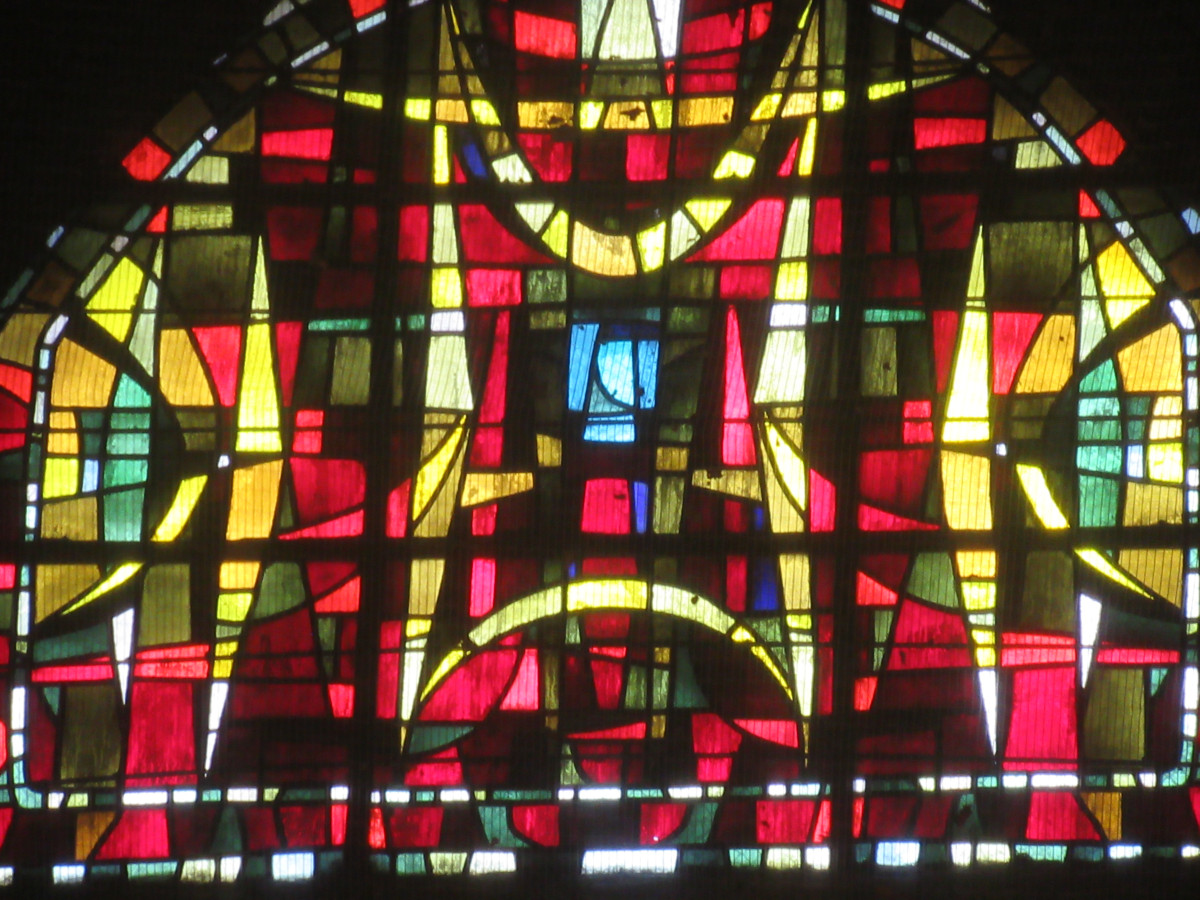
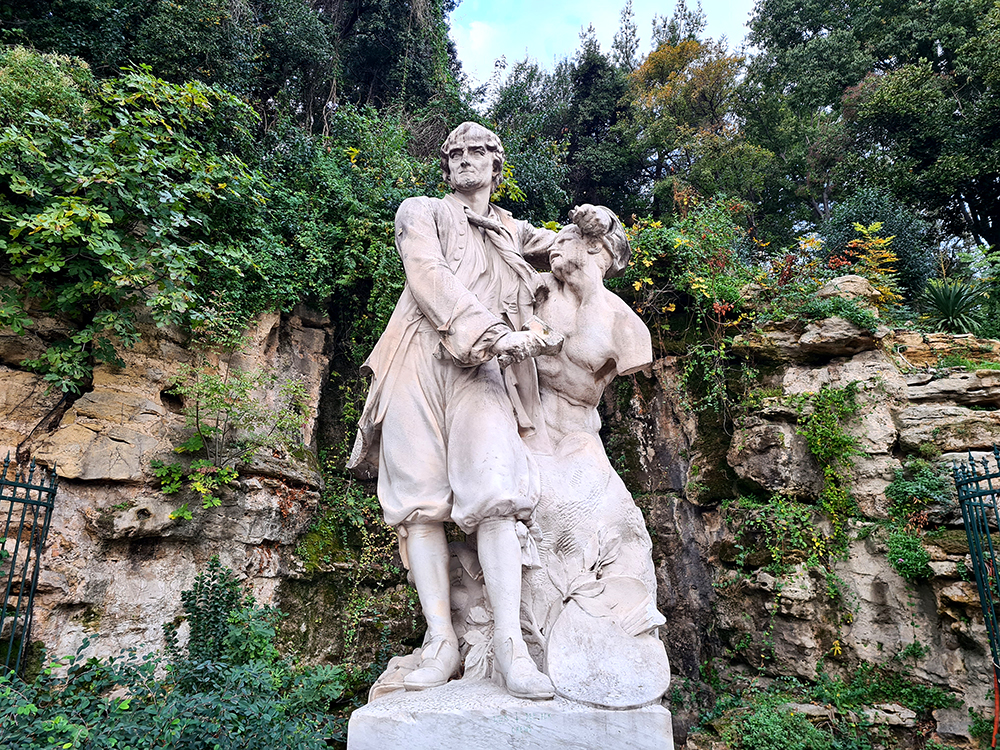
03 The Abbaye de St Victor
Christians arrived in Marseille in the first century. The St Victor Abbey was founded in the 5th century, built on the burial place of the St Victor, a Roman soldier martyred because he refused to make sacrifices to false idols. It became a place of pilgrimage, so a church grew up and by the Middle Ages it was one of the country’s most powerful abbeys. One abbot was Guillaume Grimoard, who became Pope Urban V in 1362. Partially destroyed in the revolution, then rebuilt in the 19th century, it’s known particularly today as a ‘jewel of early Christian art’ because of its large crypt containing sarcophagi from the 4th and 5th centuries.
04 The Statue of Puget
At the entrance to the Jardin de la Colline Puget is a statue of Pierre Paul Puget (1620-1694), a Marseille-born sculptor with the reputation of ‘the Michelangelo of France’. He designed some of Marseille’s major sights, including the Halle de Puget and the Vieux Charité, which are both still in use today. The Halle looks like a classical temple, with its 20 columns, and is used today for stalls selling fresh produce. The Vieux Charité, in today’s Le Panier district, was designed as an almshouse, with four terraces around an elegant courtyard. Today it is an art gallery. Puget thought highly of himself, remarking ‘the marble trembles before me, no matter how large it is.’
monarchy and revolution
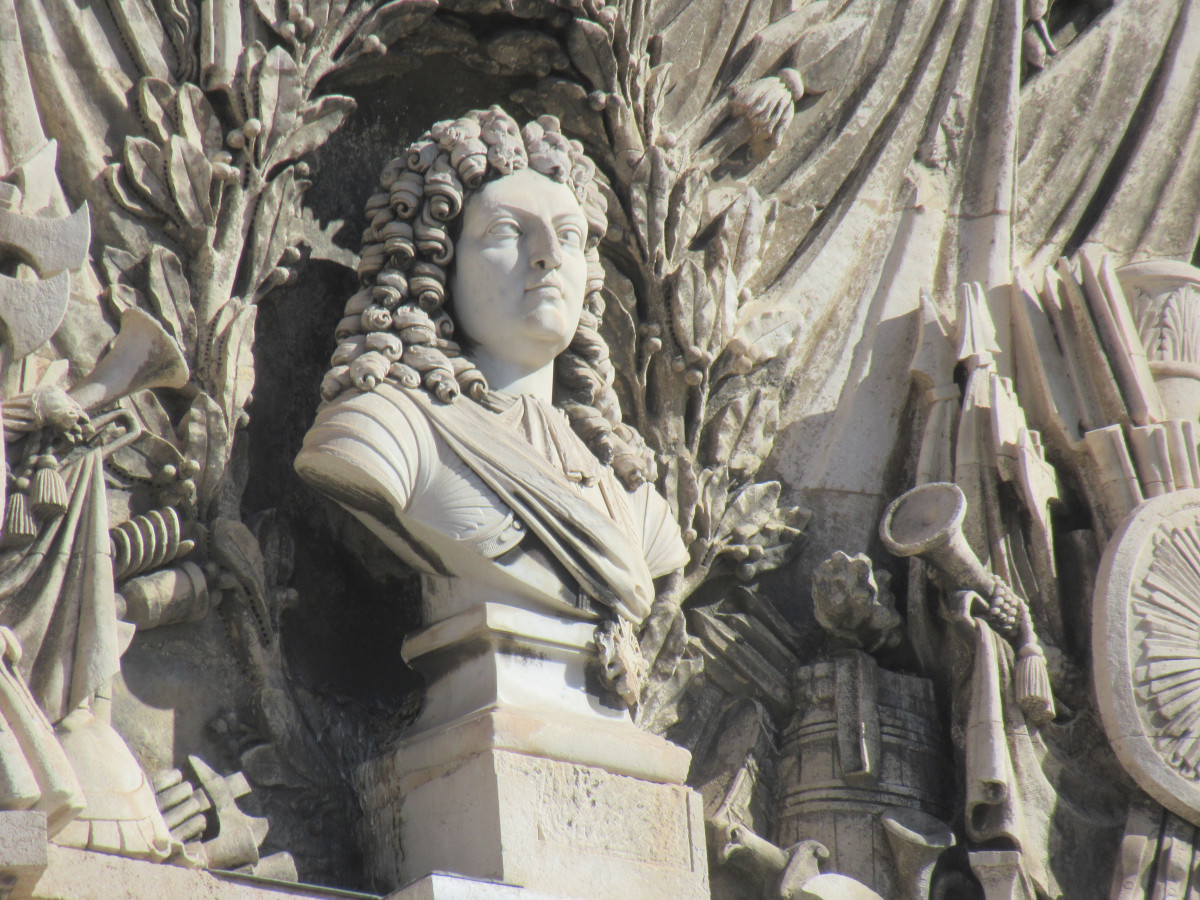
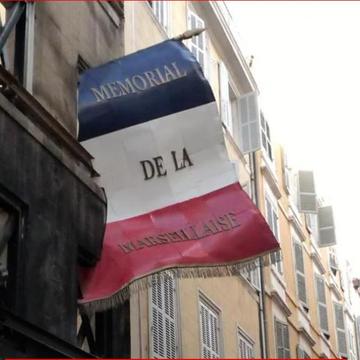

05 The bust of Louis XIV
Certain monarchs had a big impact on history in Marseille. There’s an impressive bust of Louis XIV (1638-1715) on the façade of the Mairie, (City Hall) on the Quai du Port. Louis made a big impact on the city. Faced with opposition in Paris from a movement known as La Fronde, Louis distrusted Marseille, accusing it of ‘being too fond of freedom’. He ordered the two forts, Saint Jean and Saint Nicolas to be built to guard the entrance to the harbour so an eye could be kept on who was sailing in and out. The locals called the Fort St Nicolas ‘la bastide du roi’.
06 The Mémorial de la Marseillaise
This little museum tells the story of an important moment in the history of Marseille – how La Marseillaise came to be the French national anthem. In 1792, at the height of the revolution, 600 soldiers marched from Marseille to Paris, singing a song called l’Hymne de l’Alsace’, which had been written by an army officer, Roger de Lisle. Its rousing tune and bloodthirsty words meant it became a symbol of the revolution. Next, the ‘Marseillaise’ was officially designated as the national anthem, even though Napoleon tried to ban it and the Vichy regime would do the same during World War II. In 1946, it was confirmed again as France’s national anthem.
Do you know how violent the words are? They were originally written to inspire French soldiers – ‘les enfants de la patrie’ – to fight for glory against ‘la tyrannie’. They are called to take up arms (‘Aux armes, citoyens’) and drench French soil in the impure blood (‘sang impur’) of the enemy. Remember that next time you hear la Marseillaise in a football stadium!
culture and commerce
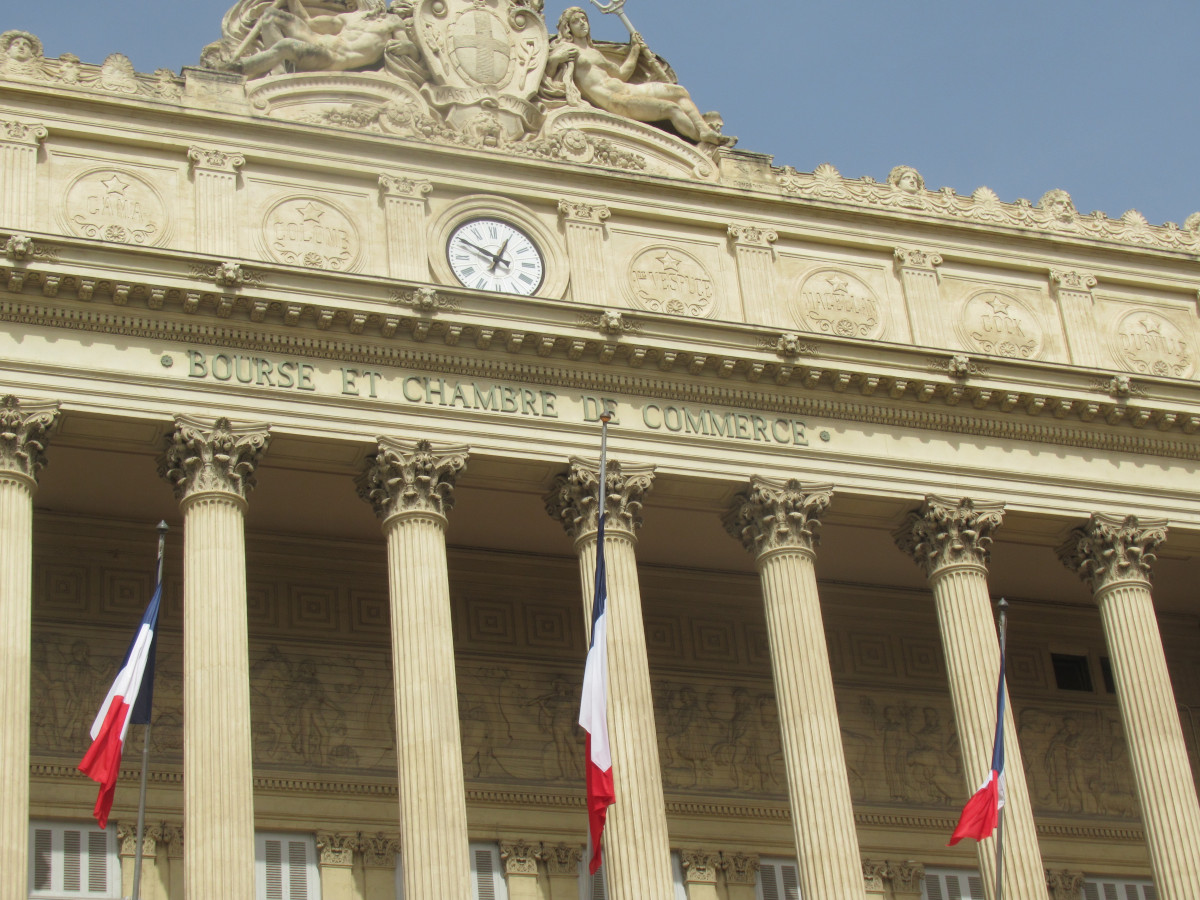
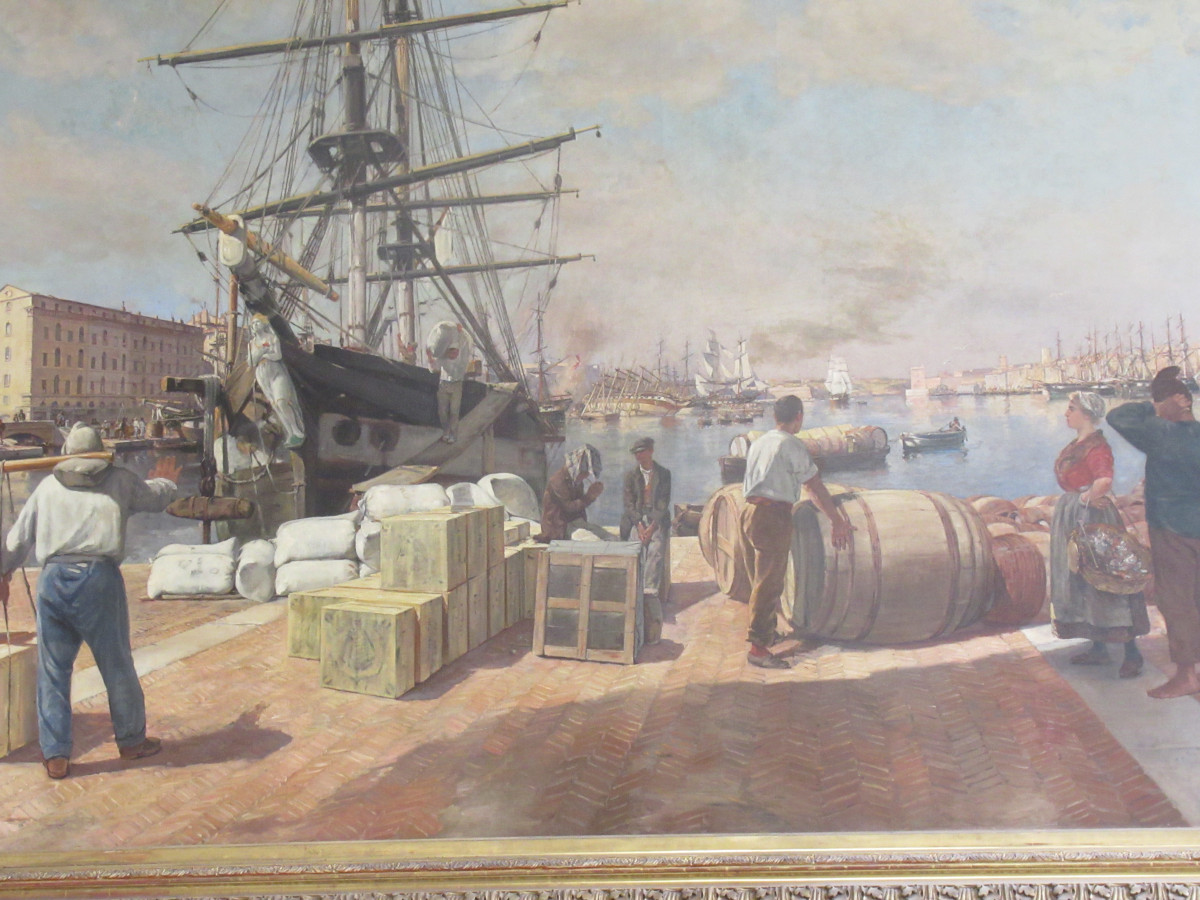

07 The Musée Provençal
The collection at the Musée Provençal covers all aspects of life and culture in Provence in the 18th and 19th centuries. It includes furniture, paintings, pottery, textiles and costumes, farming equipment and items from everyday life. There’s an impressive collection of ‘santons’, both pottery and cloth, for which the region is famous. Originally little models to build a nativity scene at Christmas, they now include all manner of characters and are set out in scenes to represent typical provençal villages. The museum runs workshops – you could even learn a little provençal dialect!
08 The Bourse du Commerce
On the front of this grand building towards the harbour end of La Canebière is carved ‘Bourse et Chambre de Commerce’, along with sculptures representing commerce, navigation and industry and the faces of maritime heroes like Columbus and Magellan. This imposing chamber of commerce was built in the1850s, as a working trading centre and a celebration of Marseille’s key role as ‘Queen of the Mediterranean, a port receiving riches from all over the world’.
There are occasional open days, which would allow you to see the huge marble-floored trading floor, surrounded by sculpted marble panels representing areas of the world – Afrique, Asie – and paintings of Marseille harbour in bygone eras. A monumental staircase leads to the upper floor where you’ll find the Salon d’Honneur, where ambassadors from all over the world were received and wall hangings represent great trading cities like Odessa, London, Calcutta and Hamburg.
THE 20TH CENTURY
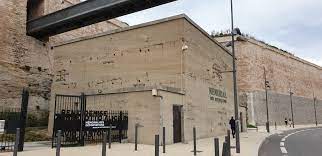

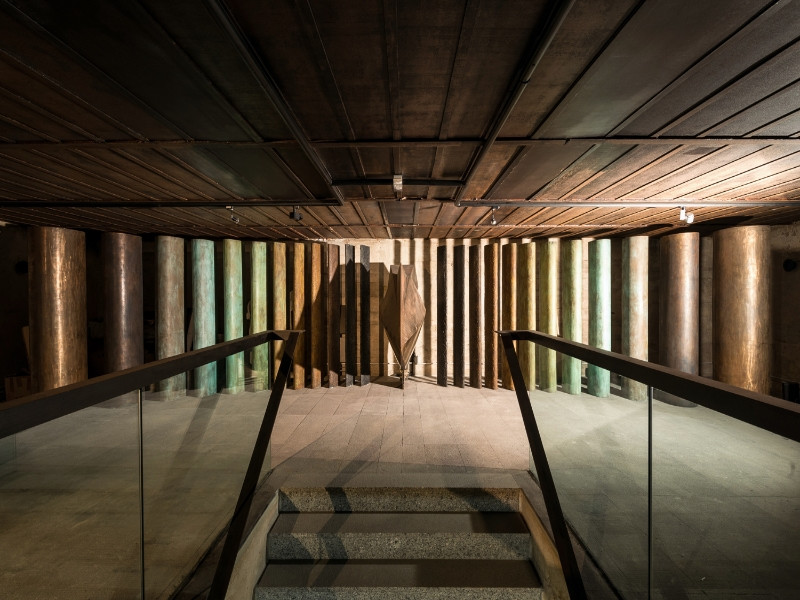
09 The Mémorial de la Déportation
In 1943, the Germans built a bunker at the port to use as an underground hospital and today it houses the Mémorial de la Déportation. It was opened in 1995, the 50th anniversary of the liberation of the concentration camps. Its documents, photos, short films and testimonies tell the story of those whose persecution by the Nazis began in Marseille. Their names and ages are recorded on the Wall of Names and new ones are still being added as more stories come to light. It also tells the story of the occupation of Marseille and of the Resistance groups who operated here.
There are other places where World War II is recalled. The Place du 23 Janvier 1943 is a square named after the date of the ‘Marseille Round-up’ when 40,000 citizens were arrested and questioned and 2,000 Jews were sent to the concentration camps. At Notre Dame de la Garde, you can still see bullet holes on the church façade, along with a sign reading ‘This wall bears marks of the battle for the liberation of Marseille 15 – 25 August 1944’. In the tiny park opposite the Abbaye St Victor, there’s a memorial board to Berty Albrecht, a Marseille nurse who became a founder member of the Resistance movement ‘Combat’ and died while in Nazi captivity.
A museum of history in marseille
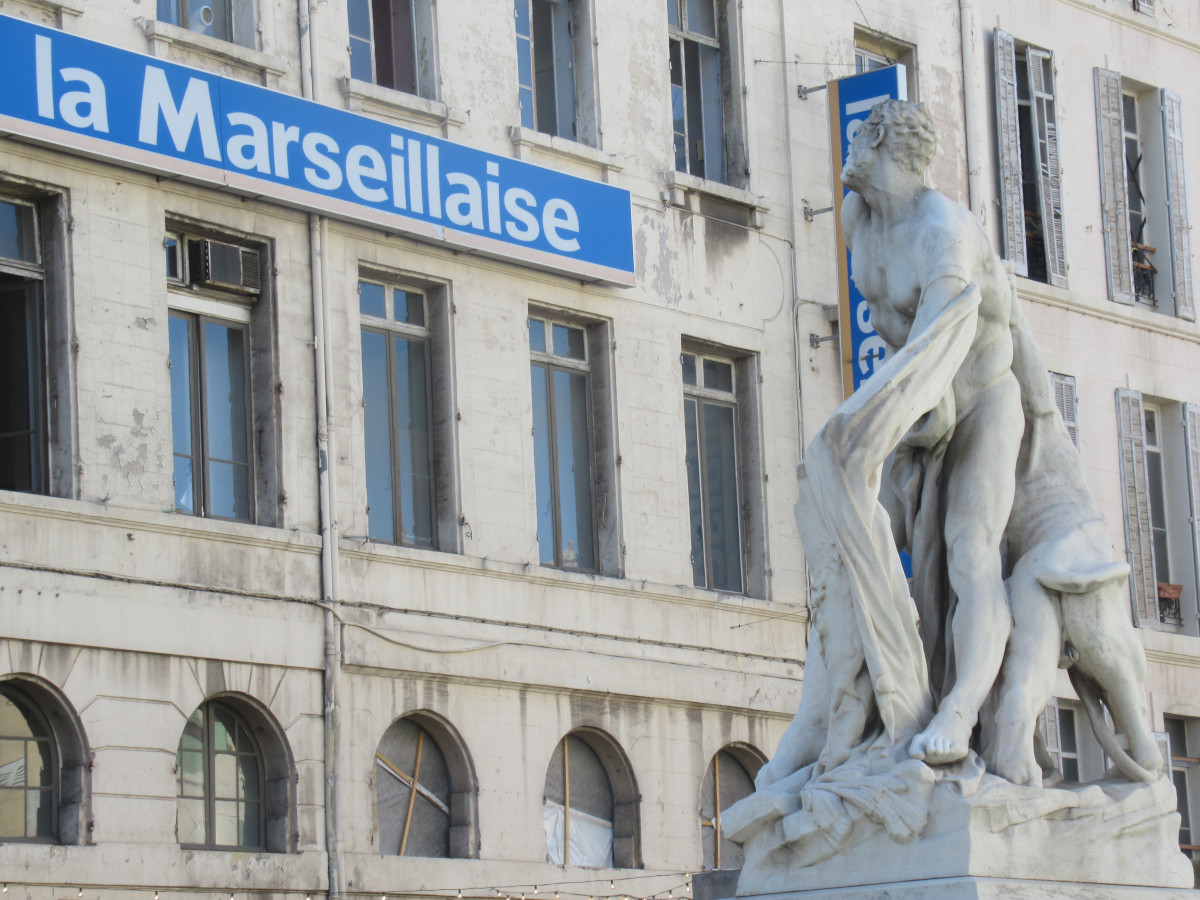
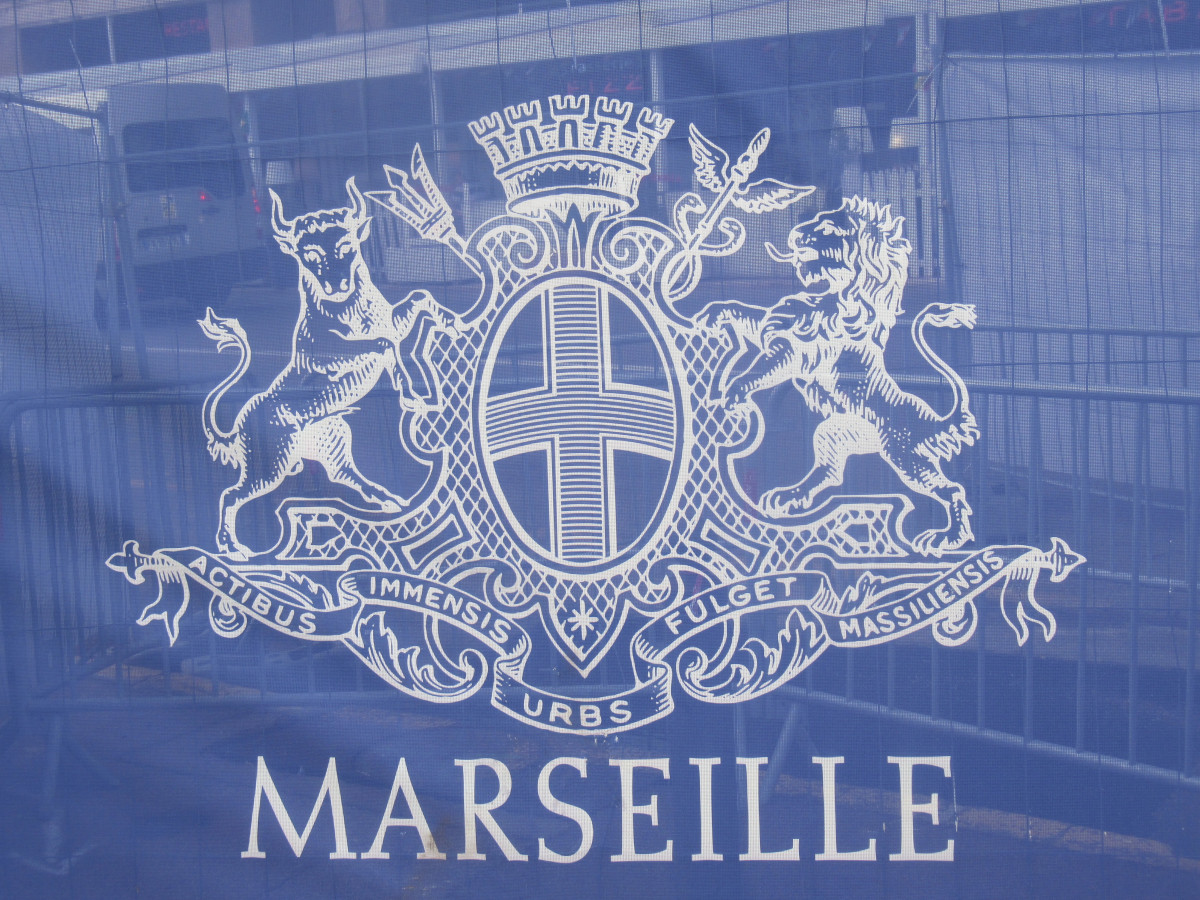
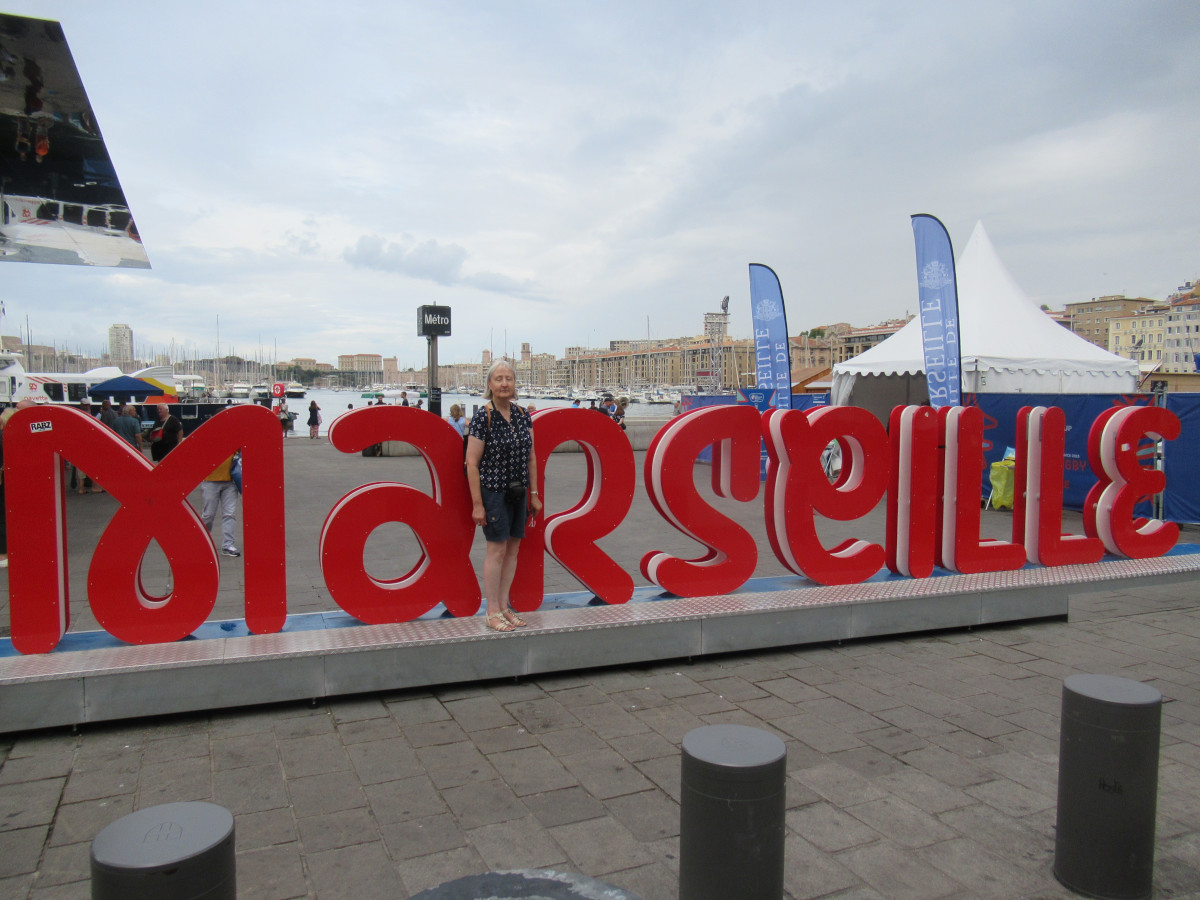
10 Museum of Marseille HIstory
The Museum of Marseille History is is the place to learn all about Marseille’s 26 centuries of history, from prehistoric times to the present day. You can learn all about its maritime history, including seeing the remains of a ship wrecked in the 3rd century BC, and discover many other stories; how the Saint Jean and Saint Nicolas Forts were built and how badly the plague of 1720 hit the city for instance.
Listen to the podcast
reading suggestions
The Wicked City The Many Cultures of Marseille by Nicholas Hewitt
Marseille Port to Port by William Kornblum
links for this post
Links for this post
Roman Docks Museum
Saint Victor Abbey
Memorial of the Marseillaise
Provencal Museum
Deportation Memorial
Museum of Marseille History
Previous Episode Introduction to Marseille
Next Episode: The Old Port, the Canebière and Notre Dame de la Garde
Last Updated on November 5, 2025 by Marian Jones





